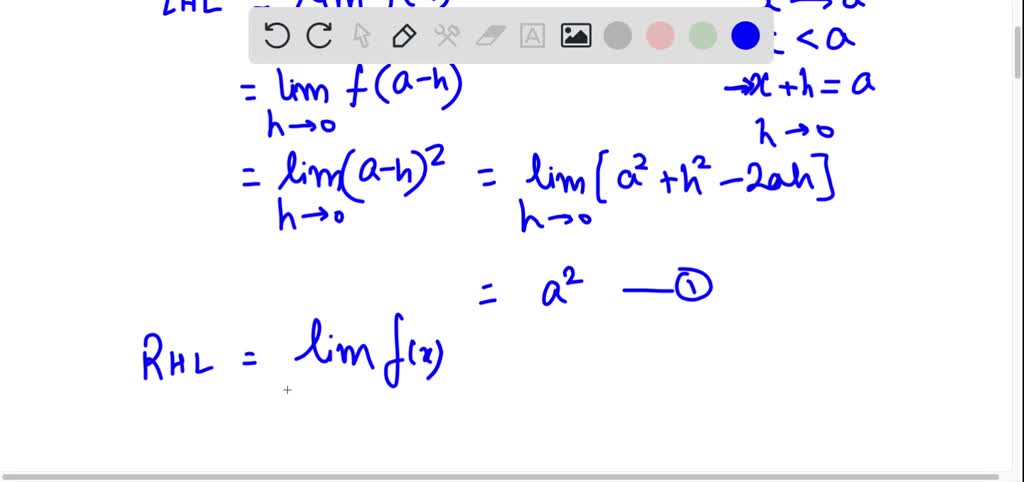Prove That X2 Y2 is Not Uniformly Continuous

Prove f(x) =x2 + 4 is not uniformly continuous on R

Related Question
Prove : The function f ( x ) = x^2 is uniformly continuous on | -2,2 |
Discussion
You must be signed in to discuss.
Video Transcript
in this problem, we have been given the function f x equals x squared. And we have to prove that this function as continuous On this interval -2-2. And for that let's figure out first the value of the left hand limit. So this left hand limit, it's basically the limit of the function effects as X here approaches a minus. So let's consider any number here which is belonging to this interval minus two comma two. And now we observed that the limit can be computed When we make a few substitutions. So as access tending to -8. So in that case, so it's a minus. That's basically a value which is very less than a. So in that case let's observe the order. So here X is lesser than A. So we add a constant edge here to equate this and as extends to a here, which will tends to zero. So here the left hand limit will be limit as x tends to zero F of instead of X. Let's make the substitution from here that it will be a minor such, So this will be equal to the limit as h approaches to zero a minus h whole square because F X is X squared, So a minus h square. So that will be limited. H. Tends to zero. Let's expand this a minus h square. That will be a square plus h squared minus two H. And putting edge zero. We're gonna get this as a square and let's market as equation one. Similarly here we observe the right hand limit and that's the limit of the function F X as X tends to in from the right side. So here X is greater than a. In that case X will be A plus H and H is here again a positive constant. So from here we can see that as X approaches to a Actual 10: zero. And instead of X, let's use this and we can write A plus H. So we already have F. X. S. X square. So F. Of a plus H. That will be a plus H whole square. And we need to determine when approaches to zero. So that will be the limit as h tends to zero A square plus two H plus H squared. And now let's substitute at zero. So we're going to get the right hand limit coming out to be even a square. And this is the equation two. And now we figured out the derivative of this function at X is equal to A. So basically we get F dash X X equals eight. So when we first differentiate it will be just two x. and at X is equal to eight, It will be two times a. So that's two a. And now let's get the value of the function at X is equal to A. So this gives us F a as a scrap because F X was given to us as X squared. So from equation 1, 2 and three here we observed that the left hand limit and the right hand limit, it's even equal to the value of the function at a. So as they are equal, we definitely conclude that the Cuban function, it is a continuous function, provided that the interval is -2, 22.
Source: https://www.numerade.com/ask/question/prove-fx-x2-4-is-not-uniformly-continuous-on-r-68589/

Post a Comment for "Prove That X2 Y2 is Not Uniformly Continuous"